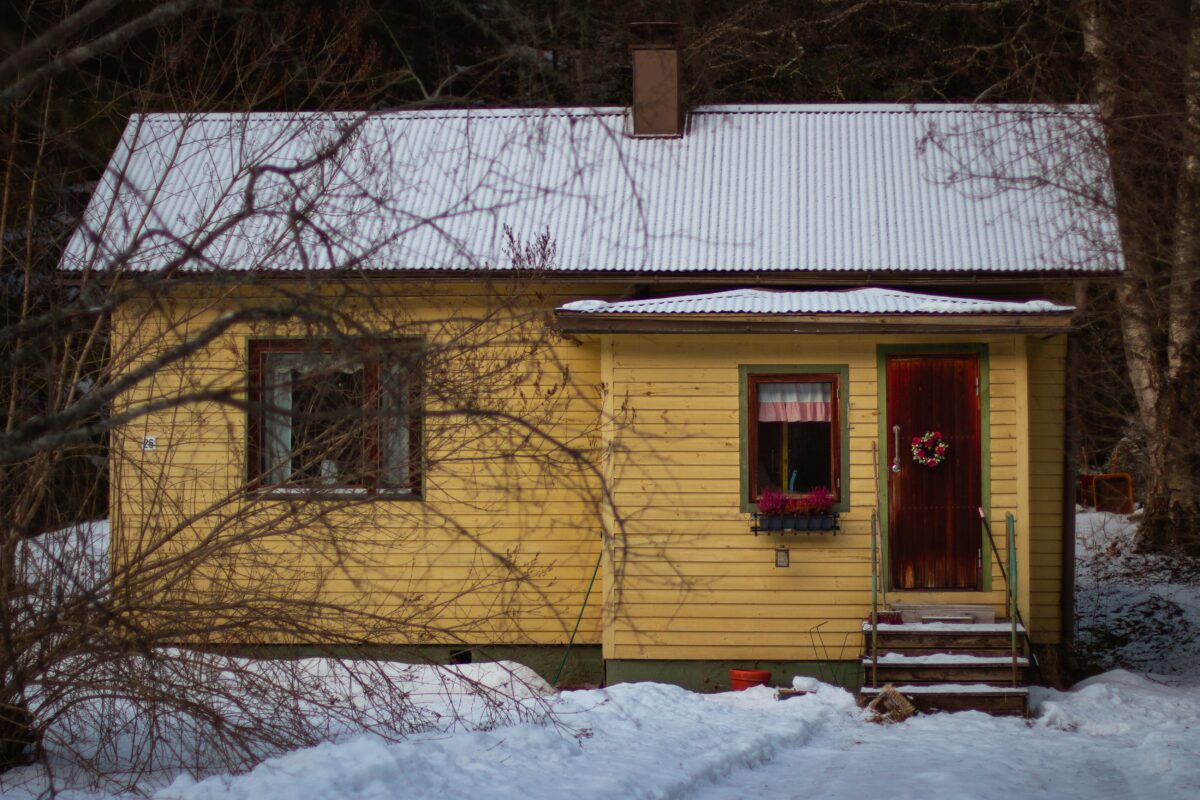7 Tips (+ 1 Bonus!) to Get Your Home Winter-Ready

“The weather outside is frightful, but the fire’s so delightful.”
It’s perfectly poetic to think about being inside near the fire when there’s a winter storm brewing outside. However, if you don’t spend some time preparing your home for the possibility of inclement weather, you may find that you spend a little less time delighting in coziness and a little more time huddling under blankets and trying to ward off an unexpected chill.
It’s not just about comfort; being too chilly can actually have a serious impact on your quality of life. According to researchers at Cornell University, lower temperatures cause people to be more likely to make errors and to experience reduced productivity. During a time when many of us are working remotely and at home handling critical tasks all day, that’s even more reason to ensure you’re winter-ready.
We’ve put together a list of tasks you should plan to undertake before winter arrives, so you can be comfortable, content and able to function effectively even amid the harshest of winter storms.
1. Have Your Chimney Inspected
The most obvious reason to have your chimney inspected? Because Santa needs to be able to make it down, of course.
The second most obvious? If you’re planning to have a fire in your home during the winter, you need to make sure the chimney is safe and won’t create a fire or smoke problem that’s more than you bargained for.
Have a professional check and clean your chimney. They should remove soot and dust; check for blockages and furry or feathery friends that may have taken up residence; and make recommendations for repairs or replacement if needed.
2. Put Up Your Storm Windows and Other Winter Weather Protectors
Storm windows aren’t just for literally keeping the storm outdoors. They can also help you keep your home a little cozier and more comfortable during cold winter weather.
Storm windows are more common in older homes, and they help to reduce condensation and frost buildup, and to provide added insulation from the cold. If you already have energy-efficient windows, you may not need to add storm windows.
However, you can look for additional opportunities to keep out draughts.
For example, you can add additional weatherstripping to block out cold air that wants to seep in around the edges of doors and windows. Putting thick curtains or drapes over the windows can also reduce the cold air that’s able to penetrate your home and keep you from being comfortable.
3. Install and/or Test Detection and Protection Devices
Wintertime often means you’ll take advantage of different heating and fuel options than you do during the rest of the year. Because many people choose to use heat sources like fireplaces, wood- or oil-burning stoves, or kerosene heaters, there are additional chances for a fire or toxic fumes to affect you and your family.
Check all your smoke detectors to ensure they’re in good working order; replace the batteries if necessary and test them on a monthly basis. Adding a carbon monoxide detector can be a life-saver in any home, especially if you’re using a fuel-burning heater in close quarters.
And, make sure you have both a fire extinguisher and an escape plan prepared in case something unimaginable happens. You’ll want to share the details of both with your family members so everyone’s prepared to be safe in the event of a fire, power outage or emergency.
4. Consider Tree Trimming Services
After finishing up inside your house, take a judicious look at the outside of your home.
Are there any trees or stray limbs located a little too close for comfort? A harsh storm could send one crashing into your home, wreaking havoc on your possession and potentially injuring you or a family member.
Having the branches pared down can give you a little extra peace of mind, and, don’t worry – they’ll grow back when spring comes.
5. Tune-Up Your HVAC
Even though you may be waiting to turn on your heater until it gets really cold, that doesn’t mean you should wait to test it out until the first cold snap. Instead, take time to schedule a tune-up during the fall to make sure everything’s in working order.
Common heating issues can include ductwork leaks and maintenance issues (like accumulated dirt and dust). Proactively handling these problems can save you money both on reactive repairs and on monthly bills, because you’ll be increasing your unit’s efficiency.
The last thing you want is to realize there’s a problem once the cold weather has already started. Spending a few dollars to get everything checked out is smarter than spending a lot of money on repairs (and space heaters to stay warm during repairs!) after the first winter storm has blown in.
6. Prepare your Plumbing
A winter freeze can wreak havoc on pipes and spouts around your house if you’re not adequately prepared.
Fixing leaks in advance of a freeze is crucial. You also need to make sure to minimize the opportunity for a new leak or pipe issue by wrapping pipes that are not frequently used.
It can also be beneficial to drain your water heater and do some preventative maintenance on your plumbing to make sure it makes it through the winter issue-free. Imagine the inconvenience of a cold shower on a chilly winter morning!
7. Konmari your Winter Wear
Even though this isn’t technically a home improvement tip, it’s still an at-home task that can greatly increase your effectiveness in winter weather. Take time before it gets cold to pull out your scarves, hats, gloves, coats, boots, and whatever else you usually use during the chilly season.
Check to see if anything has holes, scuffs or signs of wear, as well as noting whether you’re missing any important items. Once you’ve done that, replace items that have worn out; clean items that require freshening up; and donate items that you no longer love or need. You’ll feel a little more warm and fuzzy after giving someone else the gift of a warmer winter.
When winter’s on its way, getting ready for the colder weather is a serious matter.
Instead of being taken unaware and spending that first frosty day trying to stay warm inside with your mittens, a fuzzy hat and a couple of blankets, spend a little time being proactive and getting yourself and your home prepared. If you feel compelled, you could always start boxing up your summer items too; when you need boxes, you know who to call!
BONUS TIP: Decide Whether You’re in the Right Home.
If you’ve done all you can to prepare for the winter and you’re still freezing, you might not be in the right home.
For example, some older homes are lovely and picturesque but weren’t really designed for modern heating and air conditioning. Even homes built as recently as the 1950s might not have been designed with ductwork that circulates air at a maximum level of efficiency.
Other homes may be modern but may have features that are costly to renovate or improve. Single-pane windows, for example, can let a lot of warmth escape and can be quite expensive to replace.
You might want to start shopping for something new that suits your fancy. When you’re really serious about escaping the cold – maybe as a remote worker who is free to relocate or as a retiree who can enjoy a winter escape to a warmer climate, our moving teams are available in cities across the country and can get you settled in and cozy wherever you decide to land.
It’s not easy to enjoy a winter wonderland when your home is icy on the inside. Spend a little time following these tips for winter home prep, so you can stay warm when cold winds blow through!
—
Photo by K8.

